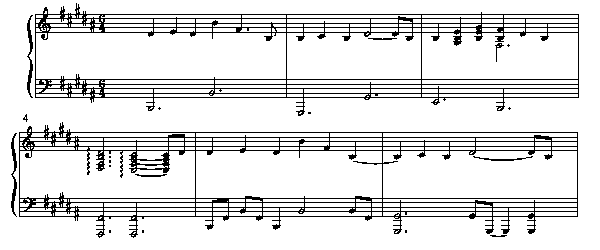You know, deconstructing a song in order
to create these midi files allows me to gain an appreciation
of a song in a way that no other process can. I was aware
of Carla / Etude; I thought it was nice, and I heard Elton
play it solo in 1999, but I can tell you now that THIS IS
ONE INCREDIBLE PIECE OF WORK. I’ve provided both the
full orchestral version and the piano solo version for your
enjoyment.
Overview
Carla / Etude is an instrumental tune with a classical sound. Yes, yes, yes
Elton creates a wonderful piano landscape that sets the tone, but in my mind
this song comes alive because of James
Newton Howard. Howard had quickly
established himself as a master of creating lush orchestral arrangements
for pop music’s biggest stars when he got involved with Elton in the
late 70s. This song is one of many where Howard shows his brilliance. He’s
since moved on to become one of the great film composers of our time.
For more well rounded music lovers, Carla is probably best
characterized as quasi-classical. That's not a knock on the
music, but lets not confuse it with Beethoven either. Elton
sticks to triad harmony throughout. His melodies are certainly
strong and well crafted, but he repeats them rather than
developing and expanding them in the classical tradition.
His structure is simple and follows pop sensibilities, primarily
working in a 4-bar framework and moving from one short section
to another.
Elton's Piano
Elton exhibits none of his trademark playing style
in this song, preferring an approach that is more like a
traditional cocktail piano style as played by thousands of
pianists in bars around the world. Hallmarks of this style
include the left hand playing up and down arpeggios in 8ths
or quarter note intervals. Elton doesn't fill up a lot of
space with his right hand playing, doesn’t do his Mozart
style arpeggiating, doesn’t do his syncopated rhythm
stuff, doesn't riff. No. He just concentrates on the melody,
keeping it very simple with just basic chord support.

One of the keys to achieving this classical sound is that
Elton rarely plays on the root of his harmonies, using voicings
that are open and expand the triad palette of sound quite
a bit. The result is a strong counter melody in the bass
that Howard absolutely capitalizes on with his orchestration.
Another key to Carla is that while Elton uses a rigid pop
structure, his chord patterns by contrast are much looser.
The chords flow effortlessly from one key to another in a
rather deft fashion that allows the song to evolve and stay
interesting.
Orchestration
Of course, this song gives Howard tremendous room to explore an amazing assortment
of orchestral riffs that are woven in and out and around the melody. His
orchestra includes strings, acoustic brass (french horn) and woodwinds (flute,
oboe and bassoon) which he combines in different ways to create different
textures and moods under Elton’s playing. A 4-bar melody will be accompanied
one time with the entire orchestra, providing a triumphant and grand sound.
The next time, that same 4-bar melody might be accompanied by a flute and
a bassoon, achieving a more delicate mood. The variations are staggering
and it reveals Howard to be a truly gifted orchestrator. Its very different
from Paul Buckmaster’s efforts: grander, more sophisticated, more counter
melodies, greater use of the orchestral sections to create different colors.
Here's one brief example of Howard's brilliance. The flutes
start the line in bar 37. Then the oboe joins in on the lower
harmony in the next bar. Then the oboe finishes the line
in the next 2 bars with the flutes shifting to a supporting
role. The arrangement is just packed with these little nuggets.

Listen to the lines folks. Listen to the way the instruments
interplay, exchanging the lead role, the flute hands off
to the violin, the french horn picks it up. This is a thing
of beauty. I hope you enjoy it as much as I have. |

